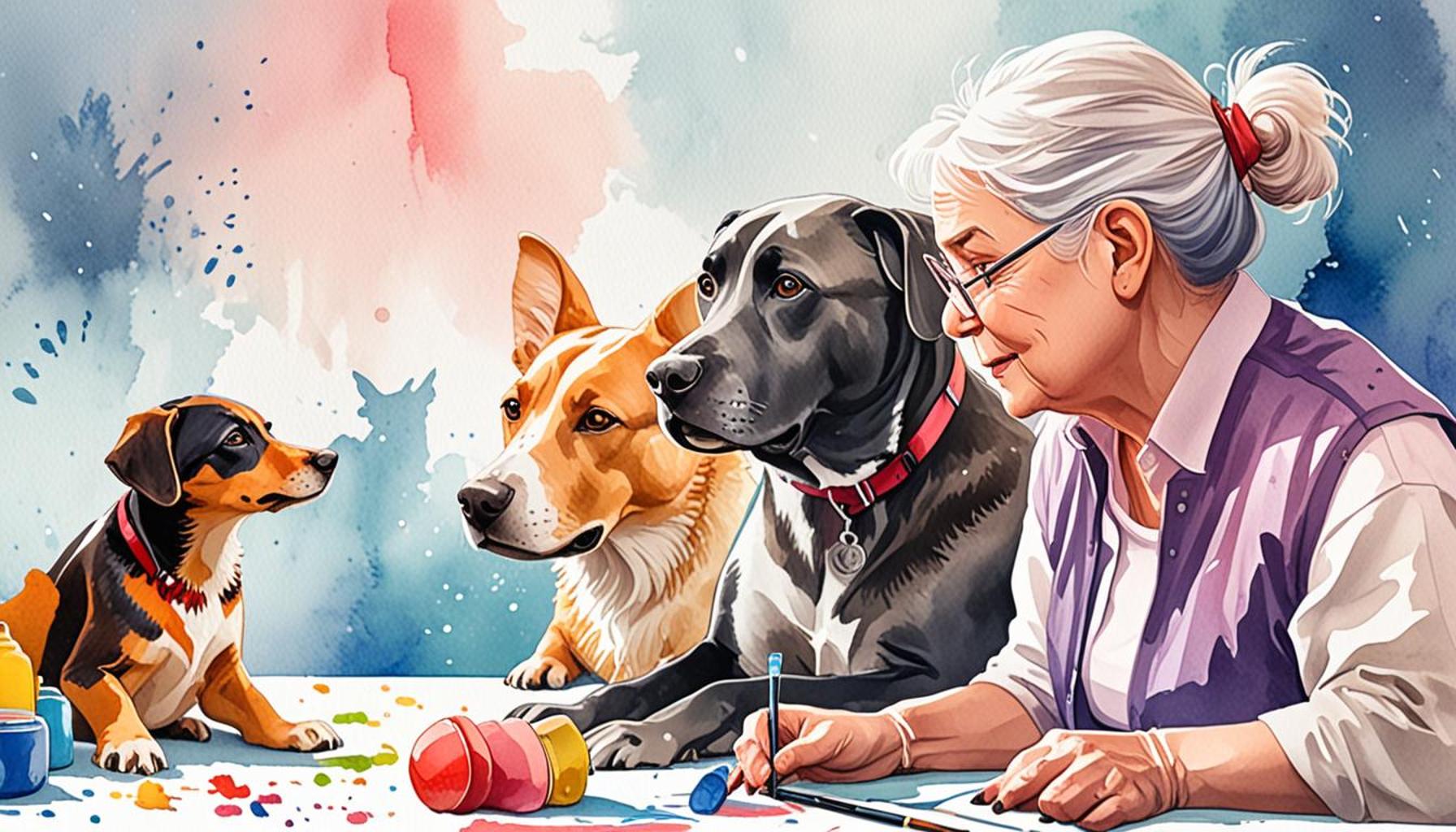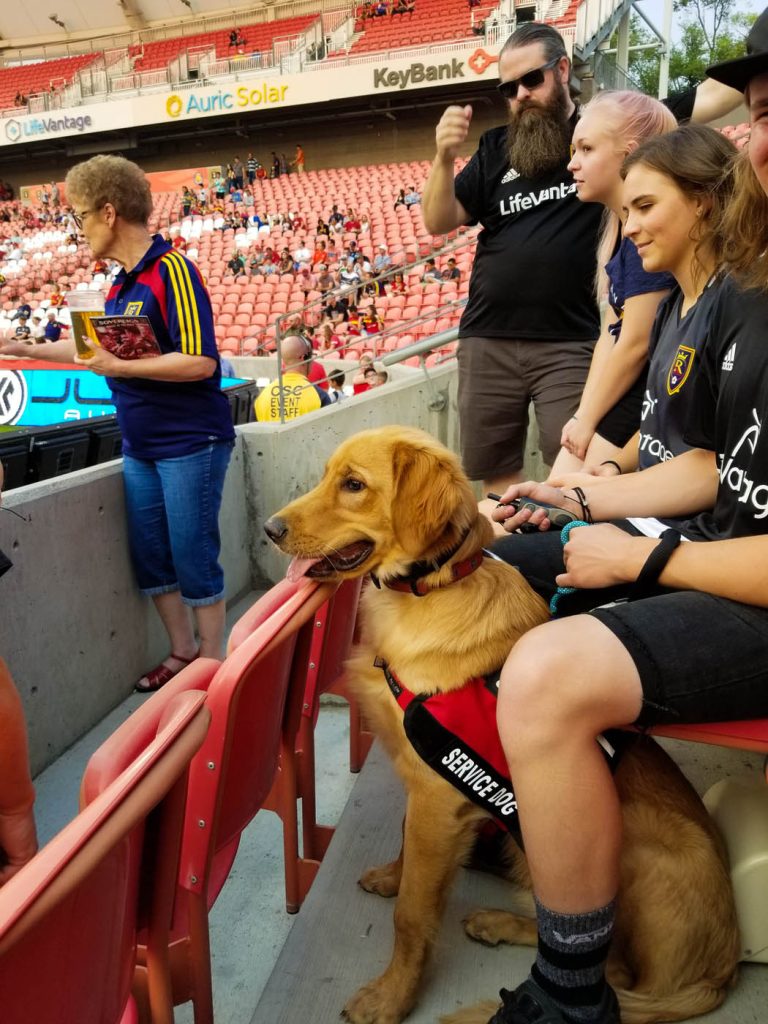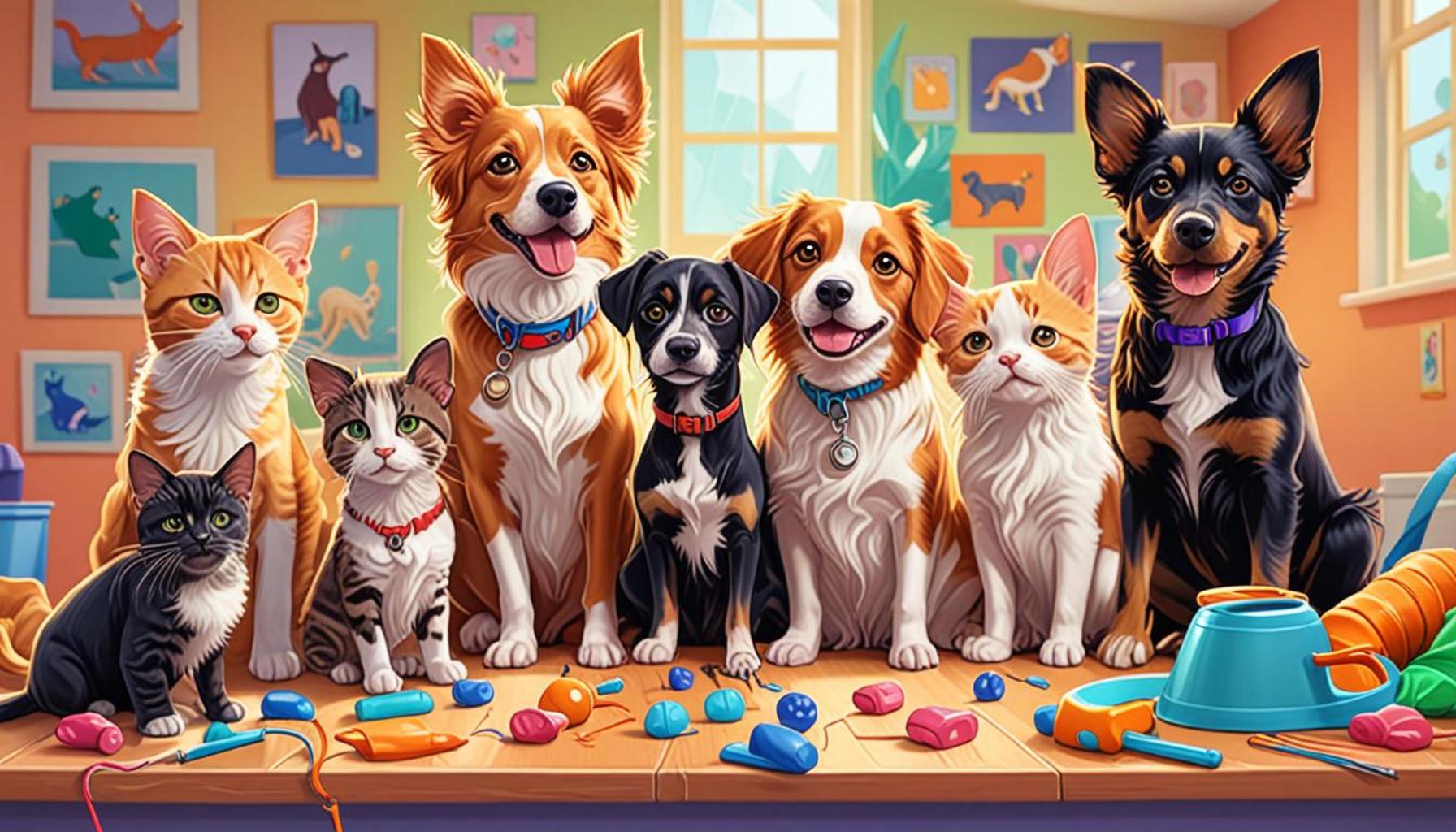Training Elderly Animals: Challenges and Adapted Techniques

The Changing Needs of Aging Pets
As pets enter their golden years, they often exhibit a range of behavioral and physiological changes that can directly affect their training and interaction with their human companions. It’s essential for pet owners to recognize these changes to provide the best care and training possible. The journey of training elderly animals can be both rewarding and challenging, and understanding the nuances of this process can lead to better outcomes in their later stages of life.
Factors Influencing Training
Some specific factors that can impact the training process for older pets include:
- Physical Limitations: Many elderly pets suffer from joint issues, such as arthritis, which can limit their mobility. This physical discomfort might reduce their enthusiasm for play and training activities. For instance, a senior dog may struggle to perform commands that require jumping or running. As a result, training methods should be adapted to be more gentle on their bodies.
- Cognitive Changes: Similar to humans, pets can experience cognitive decline as they age. This may manifest as confusion, memory loss, or slower reaction times. A dog that once learned commands quickly might now take longer to grasp the same concepts. Pet owners should be patient and understanding of these potential challenges, providing ample opportunities for the pet to absorb and learn new information.
- Health Concerns: Health issues like diminished hearing or vision can hinder an older pet’s ability to respond to commands. For example, a dog that is hard of hearing might not react to verbal cues alone. Training techniques may need to rely more on visual cues, like hand signals, to effectively communicate expectations.
Effective Training Techniques
Adapting training techniques is crucial for the success of elderly pet training. Here are a few strategies that can be particularly beneficial:
- Short Sessions: Keeping training sessions brief, around 5-10 minutes, can help accommodate an older animal’s shorter attention span. Frequent, short training sessions can be more effective than longer ones, ensuring the pet remains engaged without becoming overwhelmed or fatigued.
- Low-Impact Activities: Incorporate low-impact training exercises that do not put excessive strain on their joints. For example, instead of traditional fetch, consider using a soft toy that allows for gentle play or rolling a ball rather than throwing it across a large space.
- Routine Reinforcement: Integrate training into everyday routines. For instance, use meal times to practice commands like “sit” or “stay.” This not only reinforces learning but also provides consistency, making it easier for older pets to anticipate and engage with their training.
Enhancing Bonding Through Training
Exploring these aspects of training elderly animals not only enhances their ability to learn but also strengthens the bond between pet and owner. As we tailor our approaches to meet the unique needs of our aging companions, we illustrate our love and commitment to their well-being. Engaging in this learning process carefully can lead to profound joy and connection, enriching both the pet’s life and the owner’s experience.
Ultimately, understanding and accommodating the challenges of training elderly pets will lead to a more fulfilling experience for both parties. By fostering an environment that respects their limitations and supports their unique needs, owners can make a significant difference in their pets’ quality of life as they grace our homes with their enduring companionship.

DIVE DEEPER: Click here to learn more about socializing your adopted pet
Understanding the Unique Challenges
Training elderly animals requires pet owners to navigate a variety of unique challenges that arise from the aging process. As pets grow older, they undergo significant physiological and psychological changes that can directly influence their ability to learn and respond to commands. Recognizing these changes not only fosters empathy but also allows owners to employ effective training strategies tailored specifically to their senior companions.
Common Behavioral Changes
One of the most notable behavioral changes in aging pets is a marked shift in energy levels. Older animals may prefer to lounge rather than engage in high-energy activities, making traditional training less effective. Understanding these behavioral shifts is crucial in adapting training styles. Here are some common behavioral changes to keep in mind:
- Decreased Motivation: As pets age, their interest in play and training may decline. This reduced enthusiasm can be linked to physical discomfort or cognitive changes. Recognizing this can help you modify your expectations and approach.
- Increased Anxiety: Older pets may exhibit greater levels of anxiety due to sensory declines or changes in their environment. This might manifest as hesitation in new situations or unfamiliar commands. Pet owners are encouraged to create a calm and familiar atmosphere during training sessions.
- Changes in Social Behavior: Senior pets may become less social, preferring solitude over engaging with other animals or people. This can affect group training sessions or socialization classes. Tailoring your approach to focus on one-on-one training can be more effective.
Health-Related Considerations
Another layer of complexity in training elderly animals arises from the health considerations that accompany aging. Conditions such as arthritis, diabetes, or cognitive dysfunction can impede a pet’s ability to learn and execute commands. It is essential for owners to account for these tough realities. Here are some health-related issues that can impact training:
- Mobility Issues: Many senior pets deal with conditions like arthritis or hip dysplasia that affect their ability to move comfortably. Training methods need to be adapted to allow for safe and gentle movement, which may include low-impact exercises.
- Cognitive Decline: As pets age, they may show signs of cognitive dysfunction, similar to dementia in humans. This may lead to confusion or difficulty understanding commands they once knew. Patience and repetitive training are vital to support their cognitive capabilities during this time.
- Sensory Loss: Hearing and vision loss are common in older pets. This can significantly affect how training cues are perceived. Owners may need to employ more visual signals or touch cues, rather than solely relying on verbal commands.
Being aware of these challenges not only prepares pet owners for the rigorous yet rewarding task of training an elderly animal but also reinforces the importance of a compassionate and understanding training approach. As we tailor our techniques to meet the needs of our aging companions, we can enhance their quality of life and continue to nurture our bond with them.
| Advantages | Description |
|---|---|
| Enhanced Quality of Life | Proper training can significantly improve the mental and physical health of elderly animals, ensuring they remain active and engaged. |
| Strengthened Bond | Training sessions create opportunities for interaction and mutual understanding between the elder animal and the trainer, fostering a deep connection. |
| Adapted Strategies | Specialized training techniques that cater to elderly animals account for their physical limitations and cognitive changes, ensuring effective learning experiences. |
| Increased Independence | Through training, elderly animals can learn new skills that promote self-sufficiency, reducing dependency on their owners. |
Training elderly animals presents unique challenges; however, adapting techniques to their specific needs can offer profound benefits. For example, applying gentle and positive reinforcement methods helps older pets overcome obstacles in learning while also reducing stress. Families are encouraged to explore these techniques to not only enhance their animal’s wellbeing but also to provide a fulfilling environment. The adaptability of these training methods ensures that age is not a barrier, allowing pets to thrive even in their later years.
DISCOVER MORE: Click here to learn about positive reinforcement techniques
Adapting Training Techniques for Senior Pets
While training elderly animals presents distinct challenges, understanding how to adapt your techniques can lead to successful outcomes and strengthen the bond between you and your pet. Here are some effective strategies that can help enhance the training experience for both you and your aging companion.
Utilizing Positive Reinforcement
Positive reinforcement continues to be a foundational approach in training, especially for elderly animals. This technique involves rewarding desired behaviors rather than punishing unwanted ones, making it particularly well-suited for senior pets who may be more sensitive to stress. Here are some key components of positive reinforcement:
- Choose High-Value Rewards: Consider using treats that your elderly pet finds irresistible, such as soft, easily digestible options that accommodate their dietary restrictions. This can include small bits of chicken or specialized senior pet treats.
- Keep Sessions Short and Sweet: Older pets may tire quickly, so it is beneficial to limit training sessions to just a few minutes at a time. Frequent, short sessions can be more effective than extended ones, allowing your pet to remain engaged without becoming fatigued.
- Emphasize Familiar Commands: Focus initially on commands and cues that your pet already knows, gradually building up to new ones. This allows them to feel more confident and reduces frustration.
Incorporating Sensory Cues
As mentioned earlier, many senior animals experience sensory declines, which can make traditional verbal commands less effective. Incorporating sensory cues can offer a different means of communication. Here’s how you can adapt to your pet’s sensory needs:
- Visual Signals: Using hand signals or gestures in conjunction with verbal commands can assist older pets who may struggle with hearing. Consider associating simple visual cues with commands to strengthen their understanding.
- Touch Cues: For pets with significant hearing loss, consider using gentle touch cues, such as tapping or scratching in specific areas to signal commands. This not only aids in communication but also provides a comforting interaction for your pet.
- Utilize Scent: Scent can be a powerful training tool for elderly animals. Use their favorite scent (like lavender or vanilla) to encourage exploration or to reinforce a command, as many senior pets may still respond well to their sense of smell even when other senses decline.
Emphasizing Mobility and Comfort
When training elderly animals, ensuring their comfort is essential. Adapting routines to accommodate mobility limitations can create a more enjoyable experience for your pet. Here are strategies to consider:
- Low-Impact Exercises: Incorporate gentle stretches or low-impact activities that are easy on the joints. Short walks or light play using soft toys can keep them engaged without straining their physical limitations.
- Comfortable Environment: Set up a cozy, familiar atmosphere for training where your pet feels secure. Avoid distracting noises, and establish a routine that aligns with their more relaxed lifestyle.
- Observe Body Language: Pay close attention to your pet’s body language. Any signs of discomfort or fatigue should signal a break or a need to change the training approach. Adapting to their cues fosters trust and encourages a more effective learning environment.
By embracing these adapted techniques, pet owners can create an enriching training environment that accounts for the unique needs of elderly animals. Tailoring methods not only promotes effective learning but also improves the overall quality of life for senior pets, allowing them to thrive even in their golden years.
DIVE DEEPER: Click here to learn more
Conclusion
In summary, training elderly animals presents unique challenges that demand patience, creativity, and a deep understanding of their physical and cognitive needs. As pets age, their capabilities may decline, but their willingness to learn and connect with their owners can remain strong if approached with the right strategies. By employing adapted training techniques, such as utilizing positive reinforcement, incorporating sensory cues, and prioritizing comfort, pet owners can ensure both an effective training experience and a harmonious relationship with their aging companions.
Furthermore, being attuned to your pet’s body language and recognizing their limits is crucial in fostering a sense of trust and security. This not only makes training sessions more productive but also enhances their overall well-being. Senior pets, like all animals, thrive when their unique needs are acknowledged, making it imperative for owners to research and implement methods that respect these differences.
As the pet care industry continues to evolve, there are abundant resources available for pet owners seeking to improve their training techniques for elderly animals. Embracing these adapted approaches will transform the challenges associated with senior pet training into an enriching journey, allowing both animals and their owners to enjoy the golden years together. For those interested in delving deeper, numerous workshops, online forums, and books are dedicated to this important aspect of pet ownership. Investing the time in understanding how to train elderly pets can open a wealth of joy and companionship that transcends the typical hurdles of aging.



